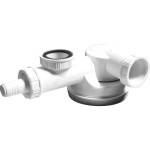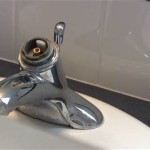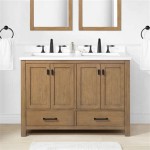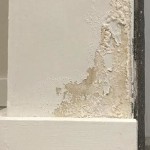How To Prevent Mold On Bathroom Caulk
Mold growth on bathroom caulk is a common problem, often occurring due to the combination of moisture and warmth in this space. The presence of mold not only detracts from the aesthetic appeal of the bathroom but also poses health risks, particularly for individuals with allergies or respiratory issues. Fortunately, several proactive measures can be taken to prevent mold growth on caulk and maintain a healthy and visually appealing bathroom.
Regular Cleaning and Ventilation
The most crucial step in preventing mold on bathroom caulk is maintaining a clean and well-ventilated environment. Mold thrives in damp and dark spaces, so regularly cleaning the bathroom and ensuring adequate ventilation can significantly reduce the risk of growth. Here are some specific tips:
- Clean Regularly: Wipe down the bathroom surfaces, including the caulk, after each shower or bath. This removes moisture and grime that can harbor mold spores.
- Use a Cleaning Solution: When cleaning, use a mild bleach solution or a commercial mold and mildew cleaner. Be sure to follow the instructions on the product label.
- Ventilate Adequately: Ensure that the bathroom has proper ventilation. Open windows or use an exhaust fan during and after showers to remove moisture from the air. If your bathroom lacks an exhaust fan, consider installing one.
Sealant Selection and Application
The type of caulk used and its application play a significant role in preventing mold growth. Some sealant options are more resistant to mold and mildew than others. It's essential to choose the right caulk for the bathroom and apply it correctly.
- Select Mold-Resistant Caulk: When selecting caulk, look for products specifically labeled as mold-resistant or mildew-resistant. These sealants contain additives that inhibit mold growth.
- Proper Application: Apply caulk in a smooth, continuous bead, ensuring that it fills the gaps completely. Avoid leaving gaps or air pockets, as these can trap moisture and encourage mold growth.
- Allow Proper Curing: Allow the caulk to cure completely before using the area. Refer to the manufacturer's instructions for the recommended curing time.
Addressing Moisture Sources
Identifying and addressing moisture sources in the bathroom is crucial for preventing mold growth. This includes addressing leaks, preventing condensation, and minimizing water splashes.
- Repair Leaks: Repair any leaks promptly to prevent water from accumulating around the caulk and creating a favorable environment for mold growth.
- Reduce Condensation: Condensation on bathroom surfaces can contribute to mold growth. Use a dehumidifier to remove excess moisture from the air or improve ventilation to reduce condensation.
- Minimize Splashes: When showering or bathing, use a shower curtain or a shower door to minimize splashes and prevent water from reaching the caulk.
By implementing these preventive measures, you can significantly reduce the risk of mold growth on bathroom caulk, ensuring a clean, healthy, and visually appealing bathroom environment.
Diffe Methods To Safely Remove Moldy Caulk
How To Remove Mold From Caulk Frugally
I Found Mold In The Shower Caulking What Should Do
How To Remove Mold From Shower Caulking Home Like You Mean It
The Best Mold Resistant Caulk For Your Home Help You
4 Effective Ways To Remove Mold In Shower Caulking Andrea Jean
Mold In Shower Caulk Try These Easy Fixes
How To Replace Bathroom Caulking Remove Mold Completely Diy Re
Here S How Remove And Replace Mildewed Bathroom Caulk
The Best Mold Resistant Caulk For Your Home Help You
Related Posts







